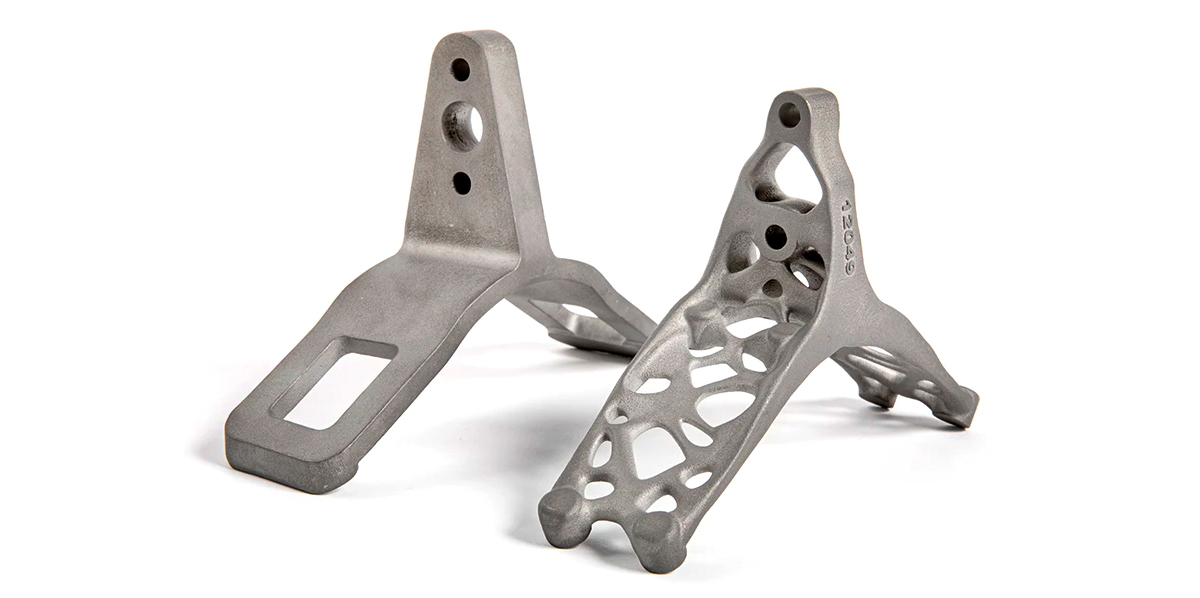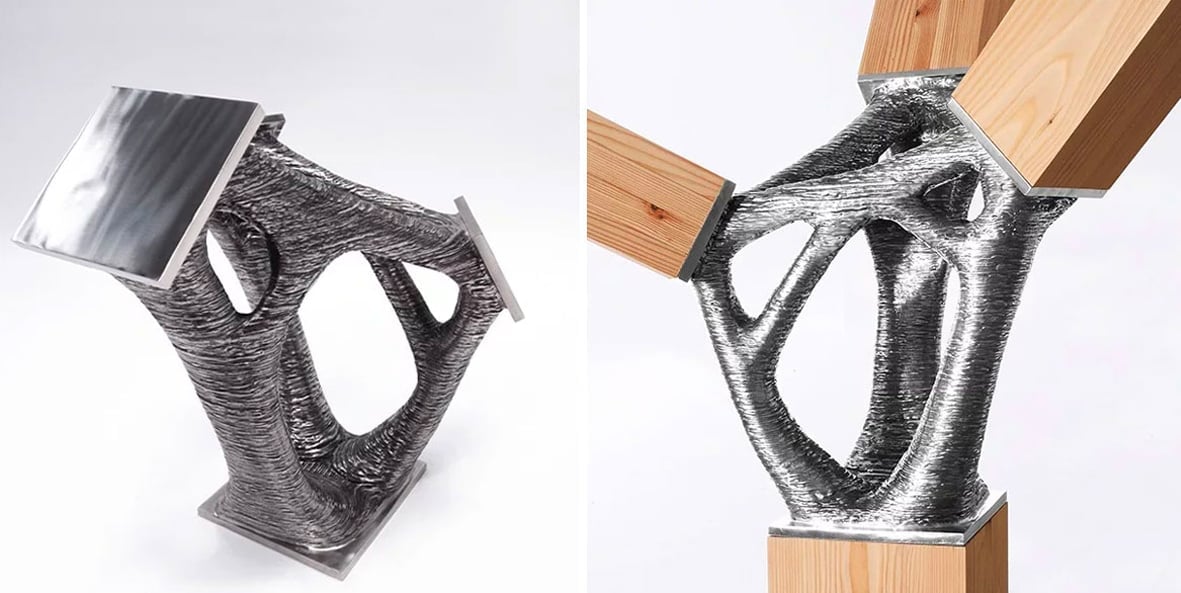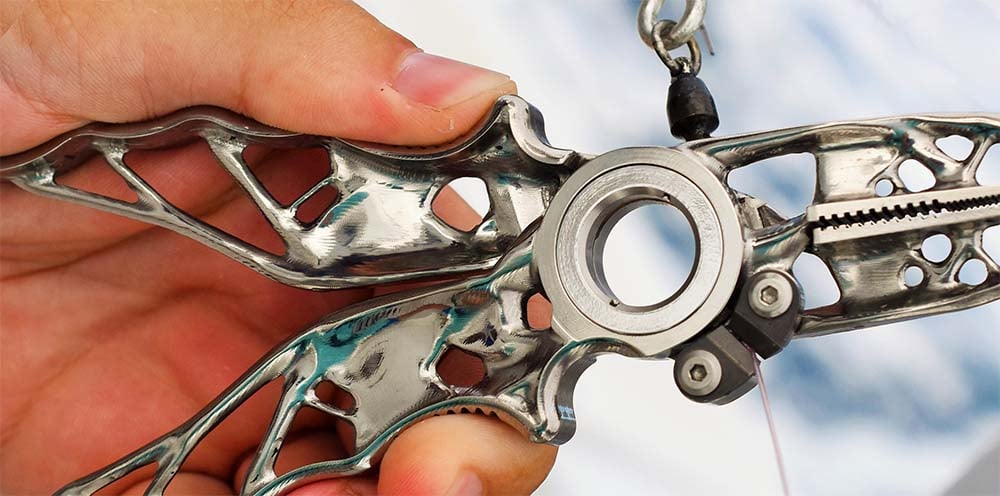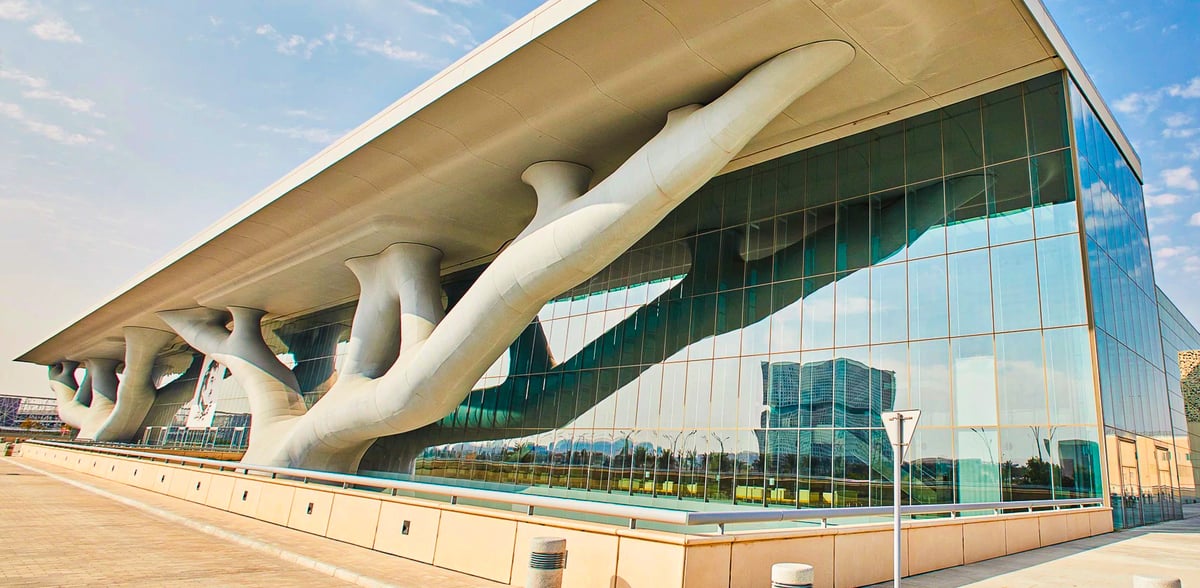Less Is More
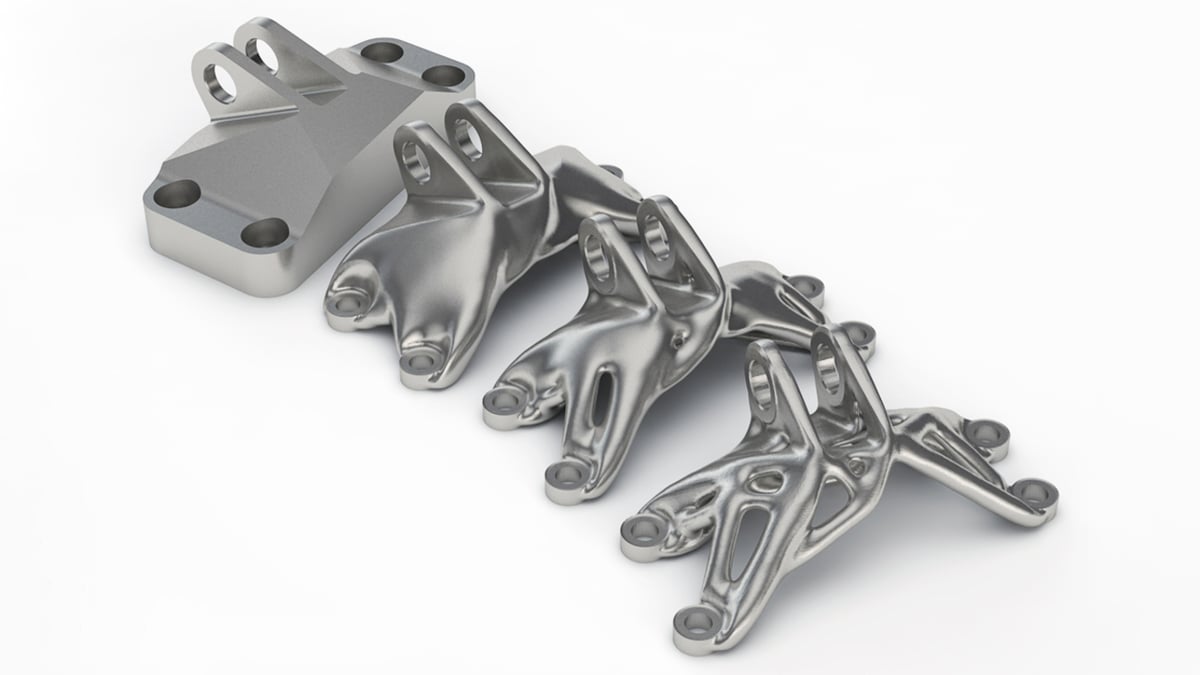
Perhaps you’ve seen parts like the bracket pictured above that seem to have their bulk stripped away, leaving just an organic-looking skeleton. This look is the hallmark of topology optimization, the process of removing material to the bare minimum required to function. The last bracket is as strong, or stronger, than the first but weighs less and uses less material.
Nearly any part, from bridges to coffee tables, can be optimized this way using software that does most of the heavy lifting and calculations. The hurdle, until recently, was how to produce these complex shapes. Metal casting is possible in some instances and plastic injection molding in others, but there are limits. 3D printing, however, is opening new doors for what’s possible in manufacturing.
Although topology optimization is not a method exclusive to 3D printing, only 3D printing can deliver on its full promise; traditional manufacturing isn’t able to make the best use of the design freedom it provides. The complex geometries resulting from topology optimization methods are often only capable of being efficiently produced through additive manufacturing processes.
With advancements in industrial additive manufacturing, topology optimization has been getting more attention and application. Let’s take a look at the method, the software, and the top uses.
What is Topology Optimization?
Essentially, topology optimization is the algorithmic process of optimizing a mechanical component or part, usually through material reduction. This is calculated according to the mechanical stresses the part will be subjected to during its regular function. It can be categorized as a subfield of structural optimization, and it’s also a part of the wider practice of generative design.
There are elements of artificial intelligence in topology optimization, certainly, but optimized parts are generally not spat out from a single algorithm. There are several topology optimization methods, many of which relate to mathematical modeling.
Topology optimization makes use of finite element analysis (FEA) simulations to assess which areas of an object are not structurally crucial. The initial FEA simulates the stress distribution of an object submitted to the external forces and other perimeters input by the user. With these results, algorithms can verify which sections of the object are less subject to internal stresses and, therefore, potentially able to be removed.
The algorithm is constantly evaluating the structural stress distribution as it removes material in order to assess the resulting effects. This is done through many individual steps until stable geometries are obtained according to the set loadings and boundary conditions, such as space and weight.
Topology optimization tools are generally used in a two-phase design process. The first run is usually performed to provide a glimpse of the optimal geometry and guide the engineer in the direction of the best design possible. The second run is more assertive in terms of the final part detailing. In real-world use, however, topology optimization is an iterative process.
The optimal design of a given part is often not intuitive and usually involves complex and organic shapes. Topology optimization algorithms don’t consider aspects like aesthetics and can violate common design rules (such as uniform thickness) in favor of performance. Your part may also have multiple conditions or objectives to account for in addition to stresses.
Engineers use their skills to tune and modify the structurally optimized part to its actual use and manufacturability.
Advantages
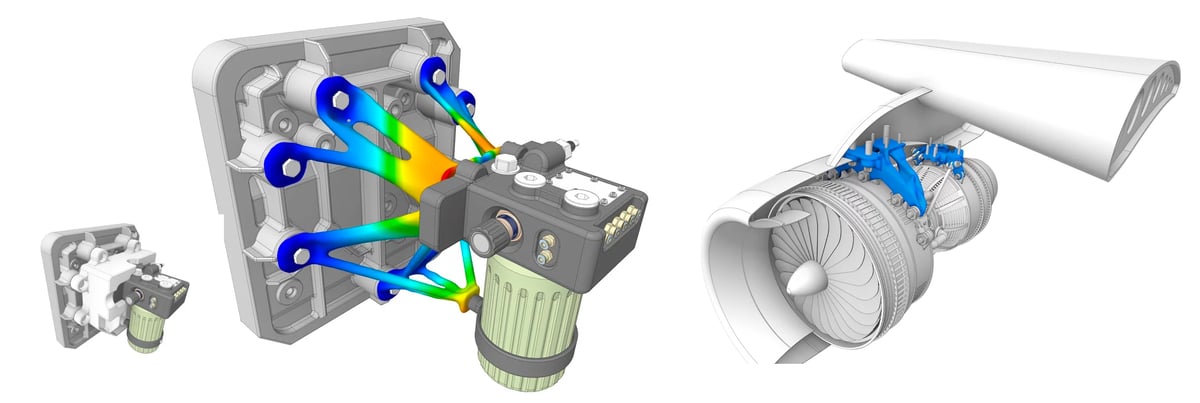
Topology optimization is used across industrial sectors, but especially in the aerospace industry, where weight reduction is essential. You’ll see it in architecture, healthcare, and automotive sectors, where reducing the amount of material used produces additional part and product benefits.
Every mechanical part or component potentially weighs more than it needs to unless it’s been topologically optimized. Lightweight structures not only reduce material costs but also limit manufacturing resource consumption. Generally speaking, lighter moving parts generate less friction and require less energy to be put in motion. Plus, the supply chain is also benefited, as lighter parts are easier and cheaper to transport.
3D printing only uses the amount of material required for the part with no scrap, so couple that with an optimized design, and materials costs can be halved or more. This is an especially valuable benefit when the parts are made with costly materials, such as titanium.
3D printing the optimized result also enables faster iterations and verifications of the feasibility of digital design, even if the part will eventually be manufactured traditionally.
Applications of Topology Optimization
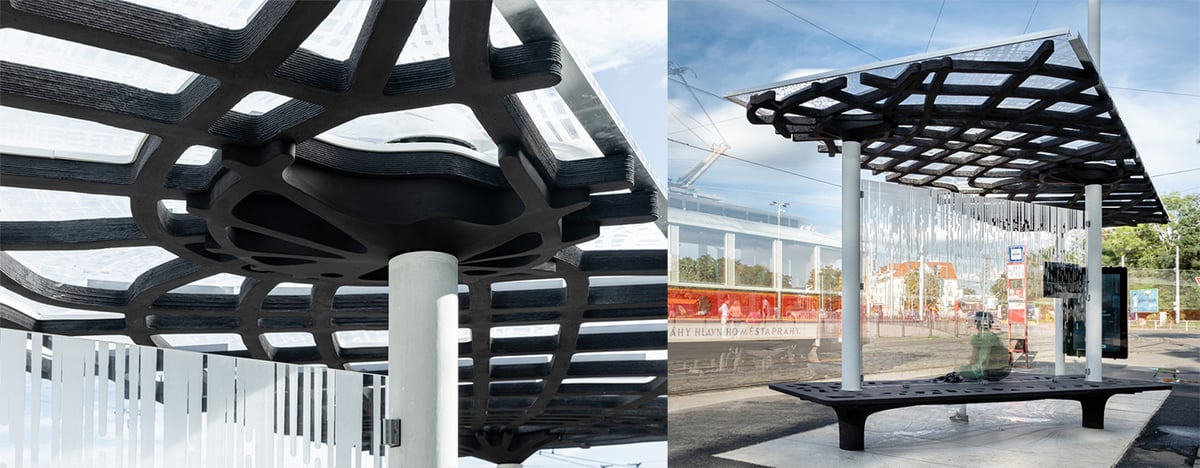
Despite the benefits of topology optimization, its practical application remains relatively low. This is partially tied to the fact that 3D printing is a cost-effective manufacturing method for one-off unique parts and very small-scale production, not mass-produced parts. Where unique parts are in-demand, such as space, healthcare, and architecture, topology optimization has as greater influence.
Although there are countless concept parts and studies, below, we feature a few of the topology-optimized parts produced to solve real-world problems, including weight, cost, speed, and efficiency.
Topology Optimization Software
All of the intricate calculations involved in topology optimization are run through specific software that is either a stand-alone program or a module integrated in a computer-aided design (CAD) program.
Until very recently, topology optimization was available only through costly software programs intended for professional applications, but with the growth of design for additive manufacturing and its tools, topology optimization is available from dozens of software providers. Several of these, are imbed it within a larger generative design toolkit. You can find those options in our article linked below on generative design software.
Altair OptiStruct / Inspire

One of the pioneers of topology optimization capability is American software publisher Altair, which provides solutions in the areas of simulation, high-performance computing, and artificial intelligence, with some pretty impressive topology optimization tools.
In fact, the company’s OptiStruct module for Hyperworks was the first commercially available topology optimization tool. Launched in 1994, it had the General Motors Powertrain division as its first customer. OptiStruct pioneered the development of innovative optimization technology, including many industry-firsts such as fail-safe topology, multi-material topology, and multi-model optimization.
OptiStruct offers many structural optimization methods and a broad range of essential manufacturing constraints for traditional processes, composites, and additive manufacturing. Because it can optimize to consider and adhere to the rules and specs of multiple different manufacturing methods, it’s an ideal tool to compare what’s possible with 3D printing vs. other methods.
The Altair Inspire offers a number of topology options including optimization objectives, stress and displacement constraints, acceleration, gravity, and temperature loading conditions. It provides a fast and accurate toolset for the design and process simulation of selective laser melting (SLM) parts.
nTop 4
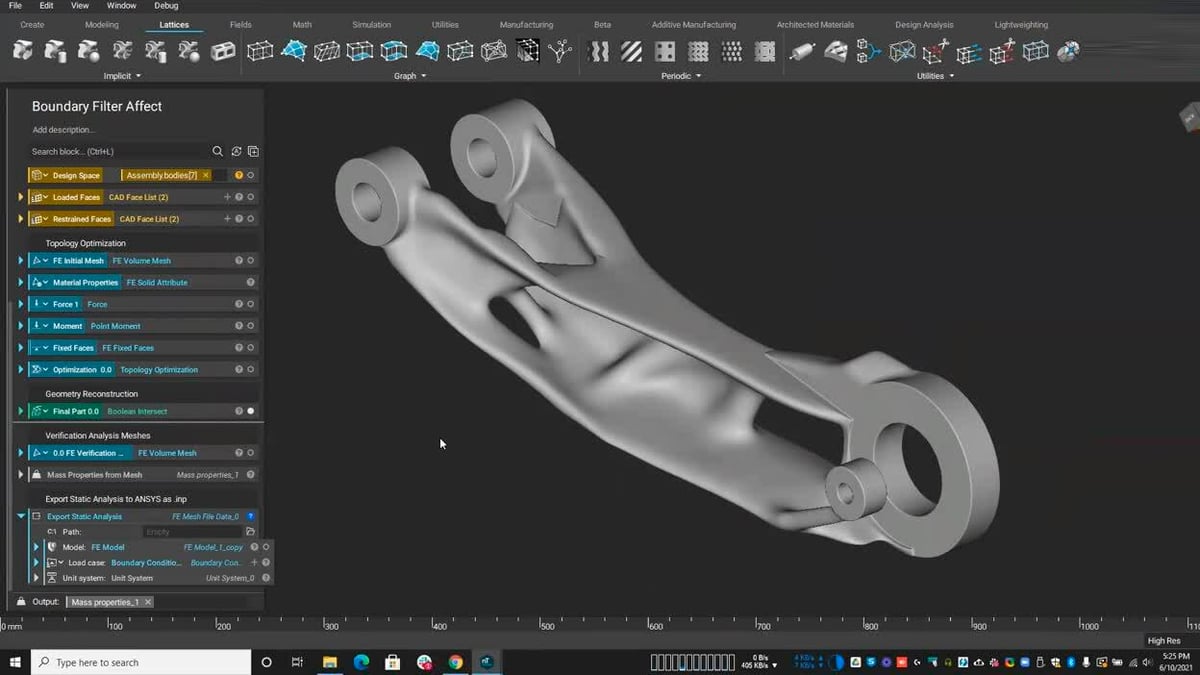
American software company nTop (formerly known as nTopology) offers a comprehensive modeling software suite for designers and engineers where they can either design a part for advanced manufacturing from scratch or import an existing digital design file for optimization. It’s built specifically for additive manufacturing, and despite the name, nTop isn’t just about topology optimization. The platform uses a range of generative design tools to lightweight and optimized parts with their functional requirements built in.
In addition to some of the tools you may be familiar with in CAD software, nTop offers toolkits, which are collections of predefined workflows that essentially automate a lot of what you want DfAM software to do. The toolkits include ones for lightweighting, design analysis, and topology optimization.
nTop not only helps you prepare design data for additive manufacture but also lets you directly communicate with your 3D printers to ensure that your design intent is maintained throughout the process.
nTop does not release its pricing structure, but it’s on par with high-end engineering software like Ansys, Creo, and CATIA.
Autodesk Fusion 360 with Netfabb
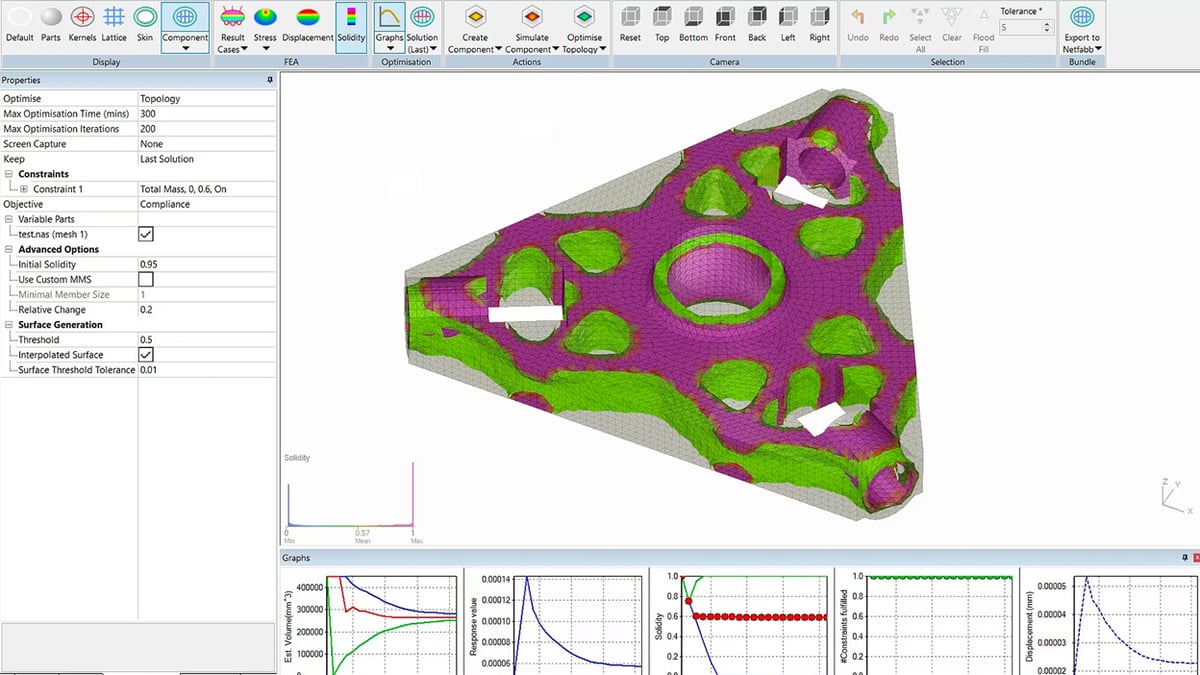
Inside Fusion 360, the popular CAD tool from Autodesk, is a generative design module with topology optimization that enables you to explore design options to reduce weight, improve performance, and consolidate parts.
Fusion 360 also comes packed with a powerful simulation environment where you can expose your design to static and thermal stresses, structural buckling, and event simulation-like dropping.
To take your topology optimization a step further, there’s the Fusion 360 with the Netfabb Premium or Netfabb Ultimate optional modules.
With Netfabb you can take your digital part file and generate new versions of it that are optimized for stiffness and weight based on the loads and constraints of the part. This Optimization Utility for Netfabb is used to enhance 3D parts using two different approaches; lattice optimization and topology optimization. Optimization Utility supports integration with Autodesk Nastran FEA solver, which is a finite element analysis tool used to analyze linear and nonlinear stress, dynamics, and heat transfer characteristics of structures and mechanical components.
Ansys Discovery
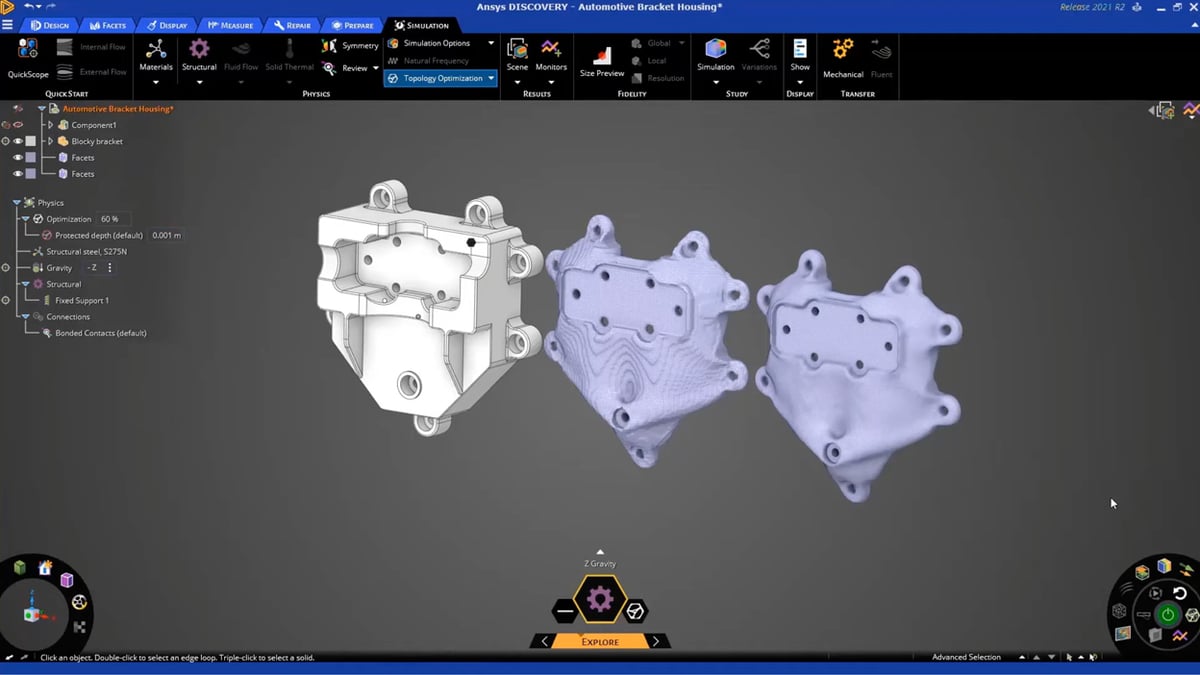
Ansys Discovery enables engineers to rapidly evaluate hundreds of potential shapes for a component by combining interactive modeling and multiple simulation capabilities that include topology optimization features. Ansys says Discovery is 3D simulation software with topology optimization.
By varying design constraints, loading conditions, and allowable regions, Discovery can produce designs that convert to CAD-ready models for additive manufacturing. Engineers can explore various geometries, materials, and physics inputs in record time to arrive at the optimal topology for their product.
Discovery enables you to answer critical design questions earlier in the design process. This upfront approach to simulation saves time and effort on prototyping as you explore multiple design concepts in real-time with no need to wait for simulation results.
Siemens NX / Solid Edge
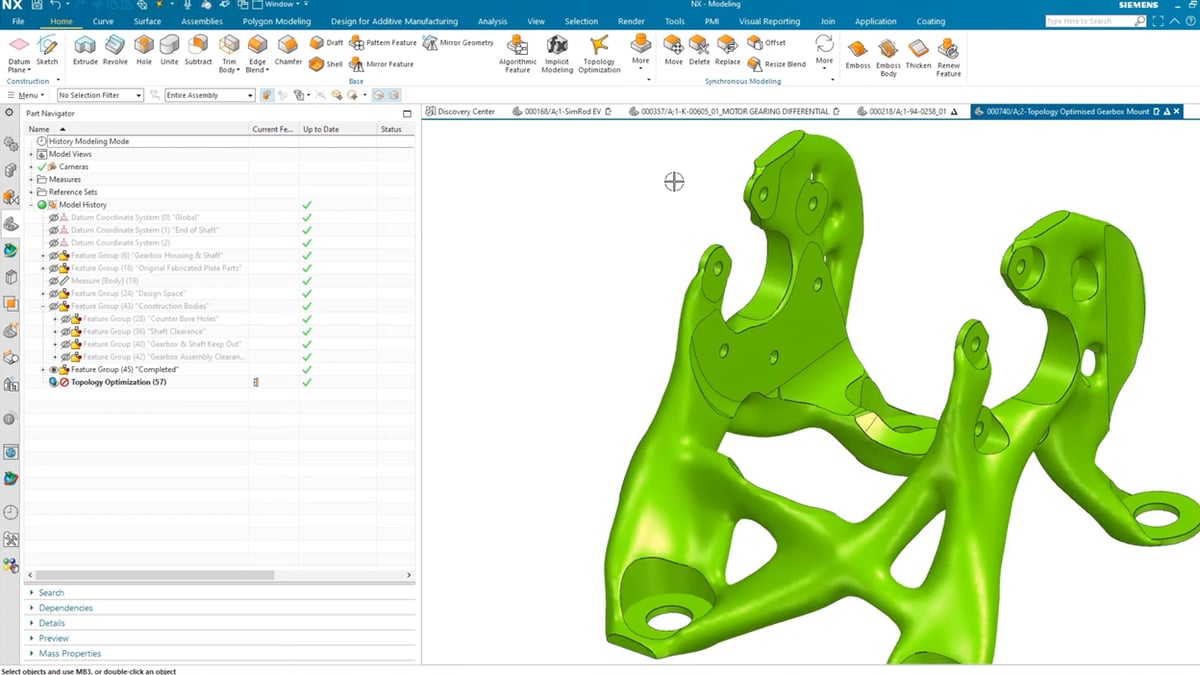
Siemens NX introduced topology optimization to its NX platform in 2022. The Topology Optimizer helps create parts based purely on functional and design space requirements that would be almost impossible to design and engineer manually. This automation can significantly reduce development times as it performs multiple iterations to generate an optimal result as opposed to having to re-run your simulation each time you make a change.
NX Topology Optimizer enables ‘what if’ studies that allow better performing and more efficient designs based on functional requirements, the company says. The result is an optimized feature (comprised of mesh and analytic geometry) that is no different to any other design feature.
Generative design in Siemens Solid Edge CAD program has been around longer and integrates advanced topology optimization within the Solid Edge 3D modeling toolkit, helping designers to create lighter components and minimize material waste in downstream manufacturing. The feature produces an organic, reduced-mass geometric solution of a specific material optimized within a defined space, accounting for permissible loads and constraints.
Dassault Systèmes Solidworks
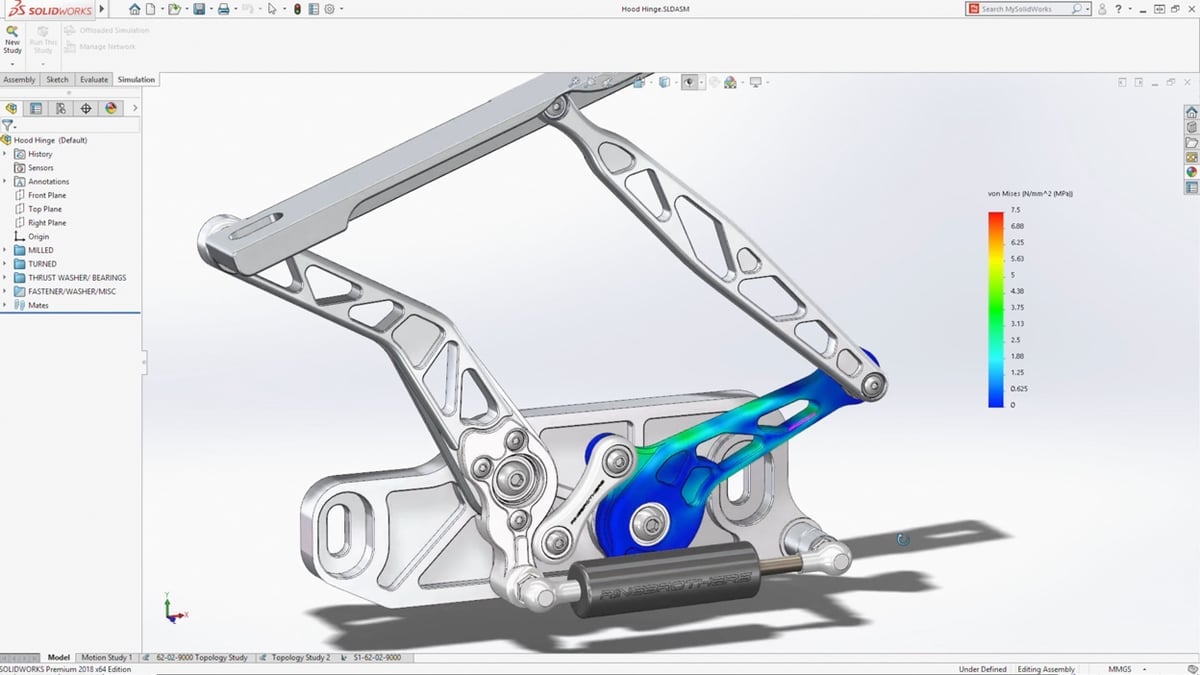
Inside Solidworks by Dassault Systèmes, the well-known software maker, is a simulation tool that includes topology optimization.
The topology optimization with Solidworks enables you to create smaller, lighter-weight components and optimize those parts for additive or subtractive manufacturing. It’s one of the more automated solutions that takes care of the meshing and post-processing the results. All you need to do is enter known information for your design, including the size of your design space, applied loads, constraints, boundary conditions, and intended manufacturing method.
Solidworks conducts its topology optimization computations in the background, freeing you up to continue working. This is an important benefit as past topology optimization approaches were both slow and computing-resource-intensive, taking over a computer workstation and preventing users from doing much else until the solution completes.
By automatically generating geometries that take the specific design space, performance requirements, and manufacturability considerations into account, Solidworks CAD-integrated topology optimization can help produce the optimal design and select the best means of production early in the process.
Beyond Solidworks, Dassault Systemes offers two topology optimization modules for its Simulia simulation applications. Tosca Structure is for structural optimization based on finite element analysis (FEA) and Abaqus Topology Optimization Module (ATOM) delivers topology and shape optimization for single parts and assemblies.
Creo
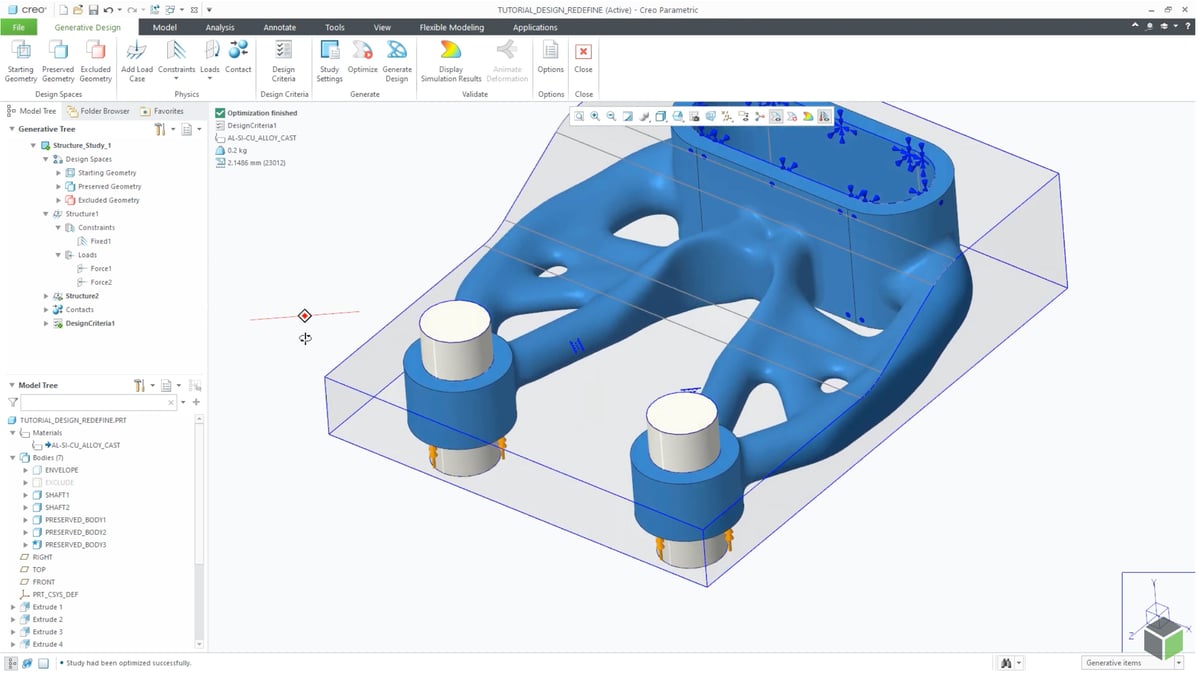
Creo is a 3D CAD software by PTC for product innovation. It supports generative design, augmented reality (AR), simulations, additive manufacturing, and IoT for better-quality products with faster workflows. Within the generative design capability of Creo,is topology optimization that connects digital design to engineering and then to manufacturing.
Creo comes with the Generative Topology Optimization extension that allows users to optimize design for manufacturing based on different constraints. It is not just a modeling tool; it also takes a step further into simulation-driven design through Ansys Powered Simulation in Creo. The process enables analyses in real-time for structural, modal, thermal, and fluid flows.
Lead image source: Salão da Moto
License: The text of "Topology Optimization in 3D Printing – The Ultimate Guide" by All3DP Pro is licensed under a Creative Commons Attribution 4.0 International License.


